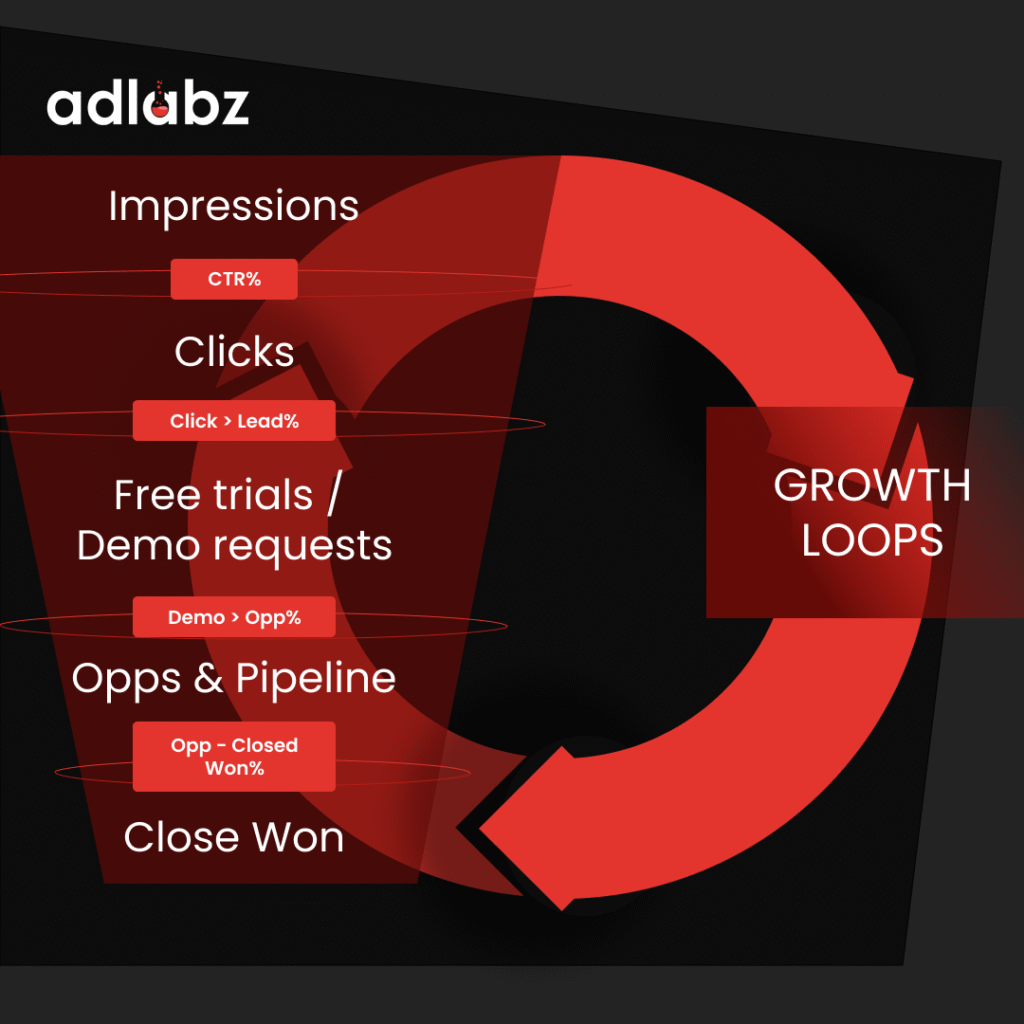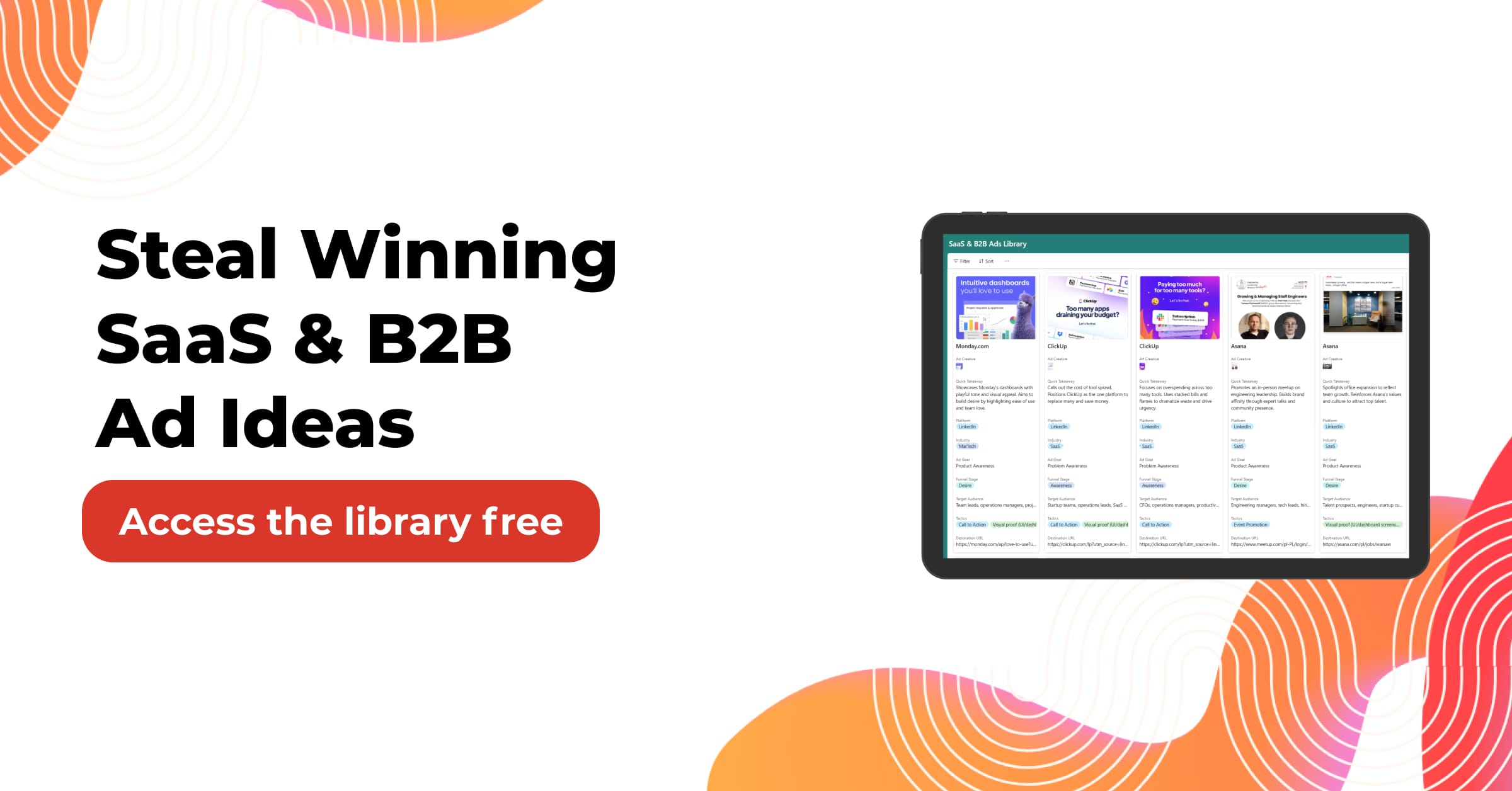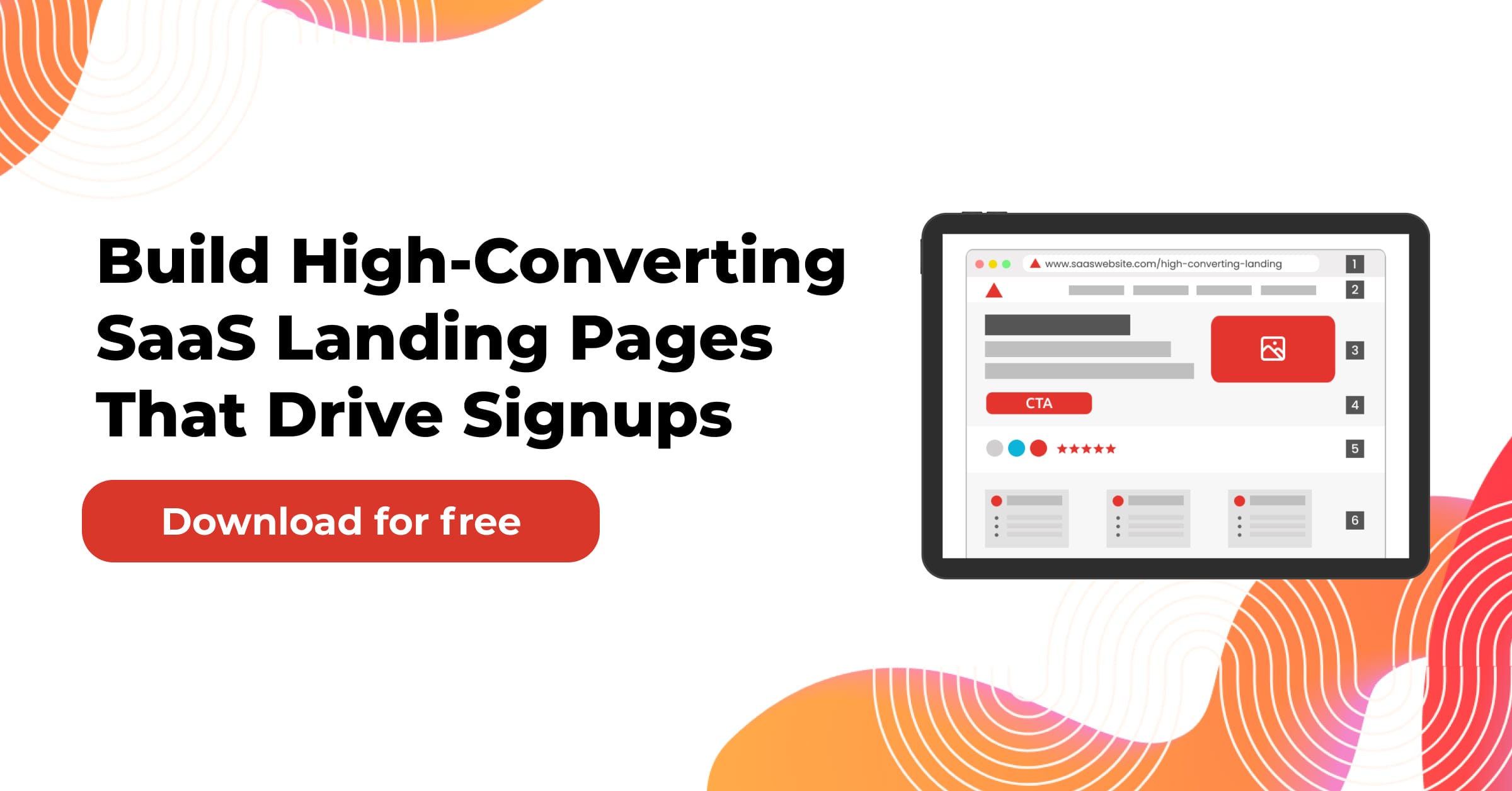Are Funnels Still the Best Way to Scale SaaS?
For years, SaaS marketers have leaned heavily on the concept of the growth funnel to structure user journeys. The idea is familiar: awareness at the top, engagement in the middle, and conversion at the bottom. It’s linear, predictable, and easy to visualize.
But here’s the problem—this model is showing its age. The reality of modern SaaS growth is far more dynamic. Users don’t follow neat paths, and successful products aren’t just acquiring users—they’re turning them into engines for future growth.
That’s where the growth loop comes in.
Growth loops offer an entirely different mindset. Instead of pushing users down a path, you design systems where each user action creates the potential for new users. It’s not a funnel you fill—it’s a loop you spin.
So the question is: Should you be thinking in growth funnels, or building growth loops?
Let’s break it down.
Table of Contents
What Is a Growth Funnel?
A growth funnel is a traditional marketing model. It maps a customer’s journey from first contact to final conversion. The stages typically include:
- Awareness
- Consideration
- Decision
- Purchase
Sometimes, retention and advocacy are added to extend the funnel.
In this model, marketing and sales teams focus on optimizing each stage. Conversion rates are measured at every level, and improvements are made to patch leaks and boost flow.
The upside? Funnels are clear. You know where someone is and what needs to happen next.
The downside? Once a customer converts, the funnel ends. There’s no built-in mechanism to drive ongoing growth.
What Is a Growth Loop?
A growth loop flips the funnel upside down.
Rather than being a one-way street, a growth loop is a circular system where actions taken by users directly feed into more growth.
Each loop typically involves:
- An input (user signs up, creates something, and invites others)
- A system action (content shared, users notified, product showcased)
- An output (new users sign up, engage, and repeat the process)
In a successful loop, every user fuels the next one.

Why Are SaaS Marketers Shifting Toward Growth Loops
The shift is being driven by necessity. Paid acquisition costs are rising. Organic reach is harder to earn. And customers are more skeptical than ever.
A growth funnel might get you from 0 to 1, but it doesn’t scale without constant reinvestment.
A growth loop, on the other hand, offers compounding returns. The more users you have, the faster you grow. Not because you’re spending more, but because your users are driving the engine.
This is what makes loops so powerful for SaaS: they’re built around the product. Not just marketing.
Another reason for the shift is that loops inherently create feedback. Every cycle gives insights about behavior, content, or feature usage. Funnels rarely generate that kind of real-time insight.
What Are the Main Types of Growth Loops?
Different SaaS companies use different loops. Here are some of the most effective ones:
1. Viral Loops
Dropbox is the classic example. Invite a friend, get more storage. That reward-based sharing created viral momentum.
Other examples: Slack invites, Zoom meeting links, Calendly bookings. Each action spreads the product.
2. Content Loops
Companies like Notion, Webflow, and Figma generate content through user activity. Each public doc, website, or design becomes a mini billboard for the product.
Content gets indexed. Shared. Reposted. And each exposure brings new users.
3. SEO Loops
A user creates content (e.g., knowledge base, review, blog) that ranks in Google. That brings in more traffic, which creates more content, and the cycle continues.
HubSpot mastered this.
4. Usage-Based Loops
Think of tools like Slack or Linear. The more one user uses it, the more valuable it becomes for the team. So they invite others. More usage = more adoption.
These loops work because the product’s value grows with each user.
5. Community Loops
Reddit, Stack Overflow, and even Discord groups rely on their communities to engage and attract new members. Participation fuels visibility. Visibility fuels growth.
Communities work well when the product naturally fits a collaborative environment, or when support and knowledge sharing are essential.
What’s the Main Difference Between Growth Funnels and Growth Loops?
Let’s compare them side by side:
| Growth Funnel | Growth Loop | |
|---|---|---|
| Structure | Linear | Circular |
| Goal | Conversion | Compounding Growth |
| User Role | Passive Recipient | Active Driver |
| Focus | Stage Optimization | System Design |
| End Point | Purchase | Continuous Input |
| Dependency | Marketing-driven | Product-led |
| Scalability | Limited by spend | Scales with use |
A funnel is great at getting people in the door. A loop makes sure they don’t come alone.
When Should You Use a Funnel vs a Loop?
The best SaaS companies use both.
Funnels are essential for:
- Launching new products
- Running paid campaigns
- Improving onboarding and activation
Growth loops shine when:
- You want sustainable, low-CAC growth
- Your product has collaborative or shareable value
- Users create output that can be reused for acquisition
Startups often begin with a funnel, then build loops once they reach product-market fit.
In the early stage, funnels help you understand your customer base and test messaging. But once you have a solid base of active users, loops become the lever for real scale.
How Do You Build a Growth Loop in Your SaaS?
Here’s a simplified process:
- Map your user actions
- What does your user do after signing up?
- Identify shareable moments
- Are there natural points to invite, share, or publish?
- Design for exposure
- Make content public, add watermarks, and allow one-click shares.
- Close the loop
- Make sure the output feeds directly into the input.
- Measure and optimize
- Track how many new users each loop cycle brings. Tighten the loop to improve speed.
- Automate the cycle where possible
- If you can build in automation or triggers, your loop runs smoother and faster. Think: auto-sharing, push notifications, embedded calls to action.
What Metrics Matter in a Growth Funnel vs Growth Loop?
Growth Funnel Metrics
- Conversion Rate (per stage)
- CPL (Cost per Lead)
- CAC (Customer Acquisition Cost)
- Funnel Drop-off Points
Growth Loop Metrics
- Viral Coefficient (users generated per user)
- Loop Cycle Time
- Retention Rate
- User Engagement
- Input-to-Output Ratio
- Time to Value (TTV)
- Expansion Revenue (from upsells or network invites)
Loops prioritize compounding efficiency. Funnels prioritize conversion flow.
Can Loops Replace Funnels Altogether?
Not really.
You’ll always need a way to bring in new users. Funnels are good at that.
Loops take over once a user is inside the product. They expand growth from the inside out.
Think of it like this:
- Funnel = Acquiring users
- Loop = Turning users into marketers
If you rely only on funnels, you pay for every new user. If you build loops, every user pays you back in growth.
What’s an Example of a Successful Growth Loop in Action?
Let’s look at Notion:
- A user creates a Notion page.
- They publish it on the web.
- Someone finds it via Google.
- That person signs up and creates their doc.
- They share that doc.
And the cycle repeats. Notion doesn’t just have one loop. It has several stacked loops, each reinforcing the others.
- Public content drives SEO
- Templates drive engagement
- Team invites drive adoption
This is the power of a well-designed growth loop. Every action leads to more action.
Other examples:
- Calendly: Every booked meeting introduces someone new to the product.
- Loom: Every shared video is a branded demo.
- Webflow: Every published site promotes Webflow’s capabilities.
What Are the Common Mistakes When Building Loops?
- No measurable output
- If your loop doesn’t bring in users or usage, it’s just product usage, not a loop.
- Too much friction
- Sharing must be easy. Inviting should be effortless.
- Misaligned incentives
- If users don’t benefit from inviting others, they won’t.
- Not closing the loop
- A loop only works if the output becomes new input.
- Treating it like a funnel
- Don’t force users through stages. Design systems that reward repeatable actions.
- Ignoring loop velocity
- Even great loops fail if they spin too slowly. Reduce the time between actions.
- Neglecting product experience
- Loops rely on users loving the product. Without that, there’s no momentum.
Final Thoughts: Growth Funnel vs Growth Loop Isn’t Either/Or
It’s not about picking one.
It’s about knowing when to use each.
Funnels are tactical. They help you convert efficiently. Loops are strategic. They help you scale indefinitely.
Funnels bring in revenue. Loops compound it.
If your SaaS company is spending more and getting less, it’s time to start thinking in loops.
Build them into your product. Track them like a system. And most importantly—spin the loop.
Because in SaaS marketing, the real growth doesn’t happen at the bottom of the funnel. It happens when users bring the next ones in.
FAQs
Q: What’s the main benefit of a growth loop?
A: Sustainability. A well-designed loop creates users who bring more users, reducing your reliance on paid acquisition.
Q: Can I run a funnel and a loop together?
A: Yes, and you should. Funnels are great for acquisition. Loops kick in after conversion.
Q: Do growth loops only work for viral products?
A: No. Loops can be viral, content-based, or even SEO-driven. Not every loop needs user referrals.
Q: What if my loop is slow?
A: That’s normal. Loops compound over time. The key is making the cycle as tight and low-friction as possible.
Q: How do I measure loop performance?
A: Start with viral coefficient, loop cycle time, and retention. These will tell you how efficiently the loop is spinning.
Q: What tools can help create and monitor growth loops?
A: Product analytics (e.g. Mixpanel, Amplitude), referral software (e.g., ReferralCandy, Viral Loops), CRM + marketing automation (e.g. HubSpot), and built-in triggers in your product experience (e.g. onboarding, notifications).
You might also be interested:





